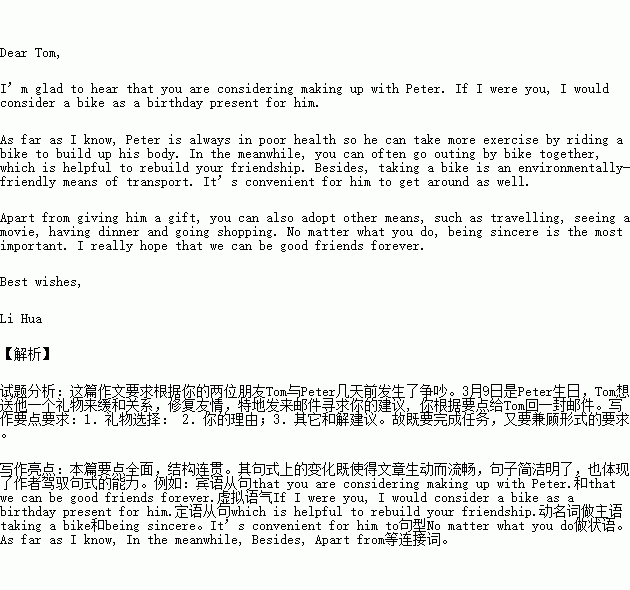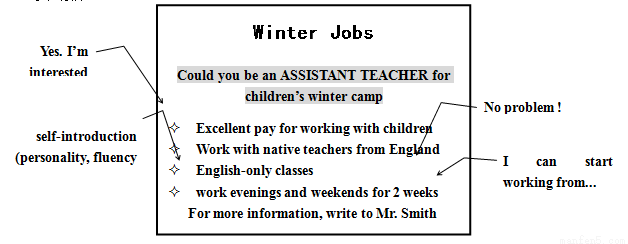��Ŀ����
�������
����������������λ����Tom��Peter����ǰ������������3��9����Peter���գ�Tom������һ������������ϵ�������飬�صط����ʼ�Ѱ����Ľ��顣�����������Ҫ���Tom��һ���ʼ���
1������ѡ�� 2��������ɣ�3�������ͽ⽨�顣
ע�⣺
1������100���ң� 2�����ʵ�����ϸ�ڣ���ʹ�������
3����ͷ�ͽ�β���������������ܴ�����
Dear Tom,
I'm glad to hear that you are considering making up with Peter��
Best wishes,
Li Hua
��ϰ��ϵ�д�
�����Ŀ


